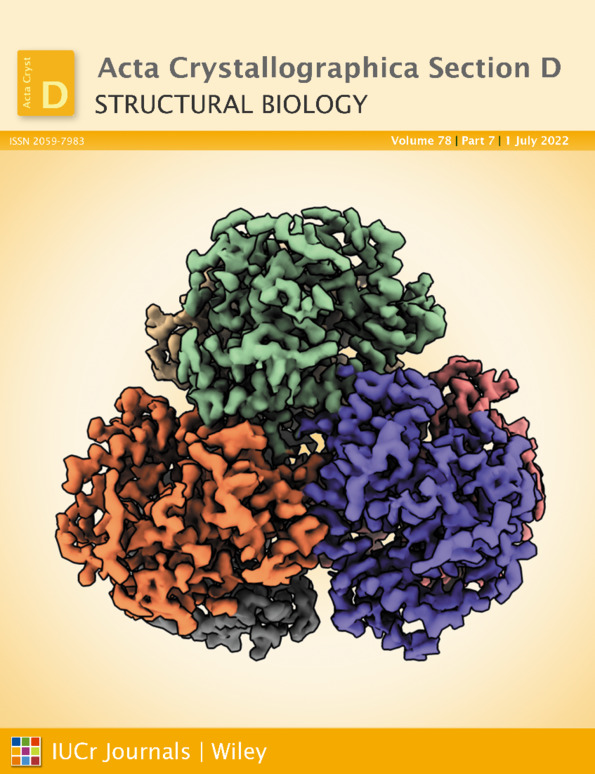Kinetic and structural studies of the reaction of Escherichia coli dihydrodipicolinate synthase with (S)-2-bromopropionate
Abstract
Dihydrodipicolinate synthase (DHDPS) catalyzes the first committed step in the lysine-biosynthetic pathway converting pyruvate and l-aspartate-β-semialdehyde to dihydrodipicolinate. Kinetic studies indicate that the pyruvate analog (S)-2-bromopropionate inactivates the enzyme in a pseudo-first-order process. An initial velocity pattern indicates that (S)-2-bromopropionate is a competitive inhibitor versus pyruvate, with an inhibition constant of about 8 mM. Crystals of DHDPS complexed with (S)-2-bromopropionate formed in a solution consisting of 50 mM HEPES pH 7.5, 18% polyethylene glycol 3350, 8 mM spermidine, 0.2 M sodium tartrate and 5.0 mg ml−1 DHDPS. The crystals diffracted to 2.15 Å resolution and belonged to space group P1. The crystal structure confirms the displacement of bromine and the formation of a covalent attachment between propionate and Lys161 at the active site of the enzyme. Lys161 is the active-site nucleophile that attacks the carbonyl C atom of pyruvate and subsequently generates an imine adduct in the first half-reaction of the ping-pong enzymatic reaction. A comparison of the crystal structures of DHDPS complexed with pyruvate or (S)-2-bromopropionate indicates the covalent adduct formed from (S)-2-bromopropionate leads to a rotation of about 180° of the β–δ C atoms of Lys61 that aligns the covalently bound propionate fairly closely with the imine adduct formed with pyruvate.




